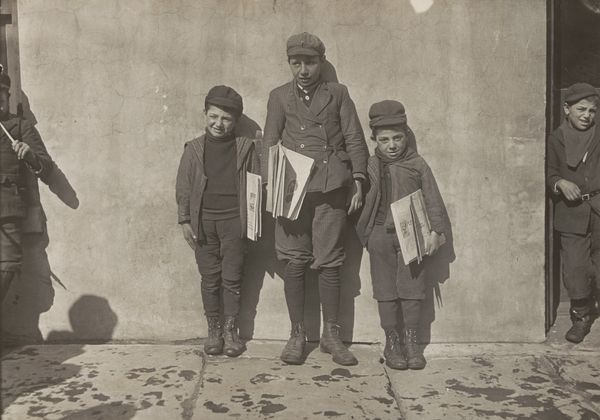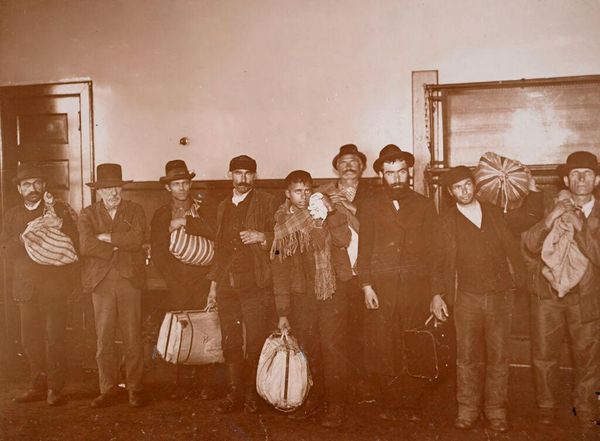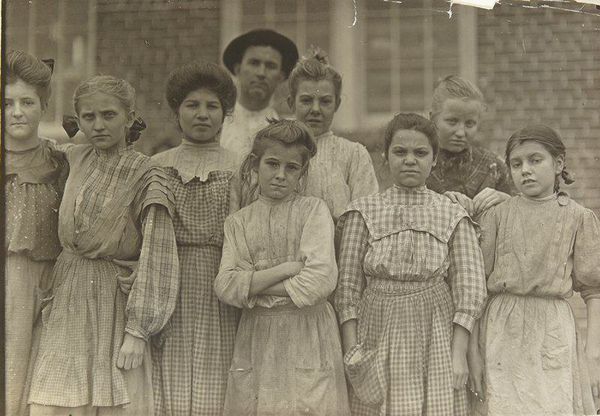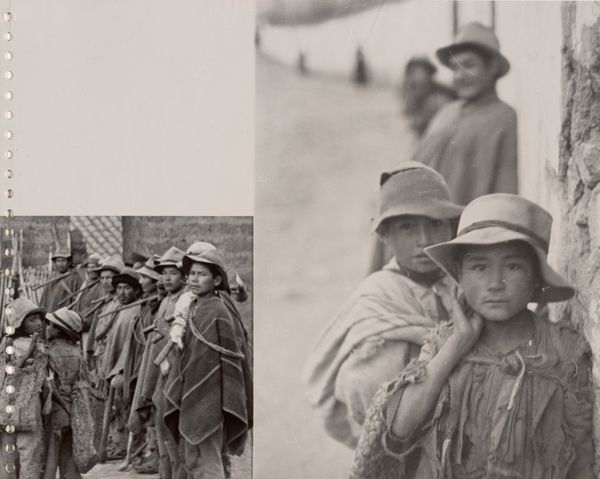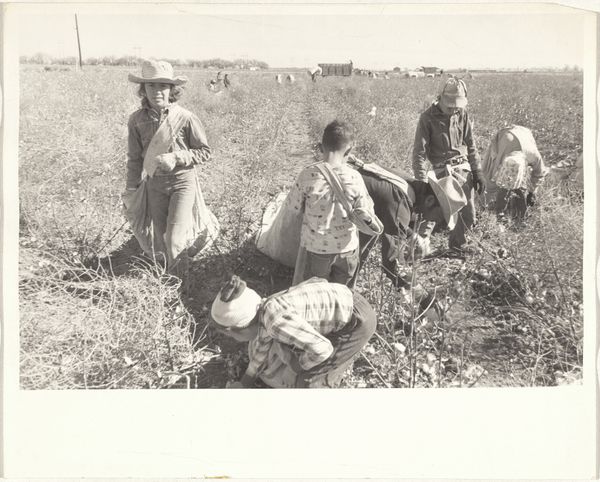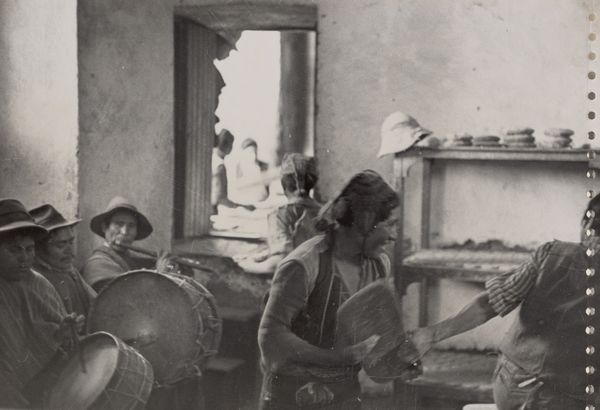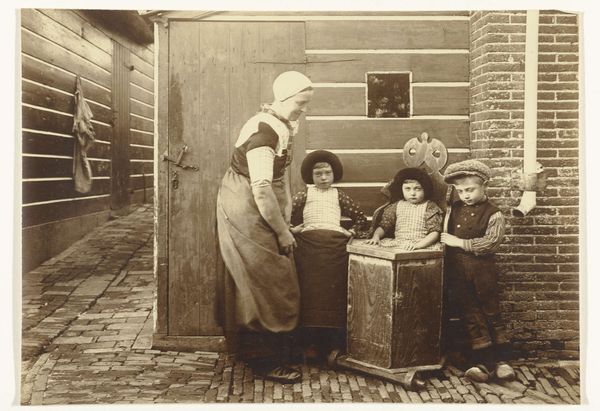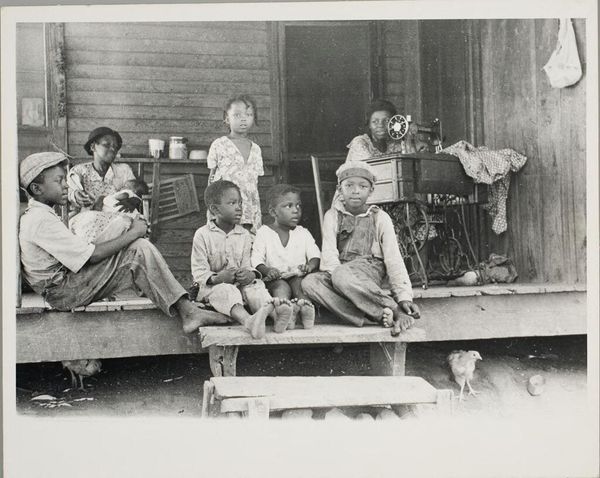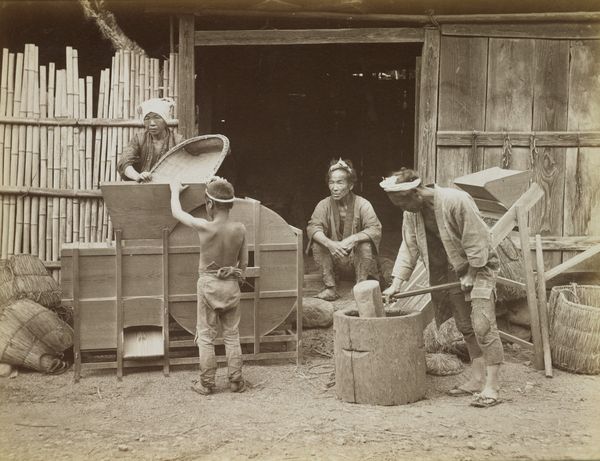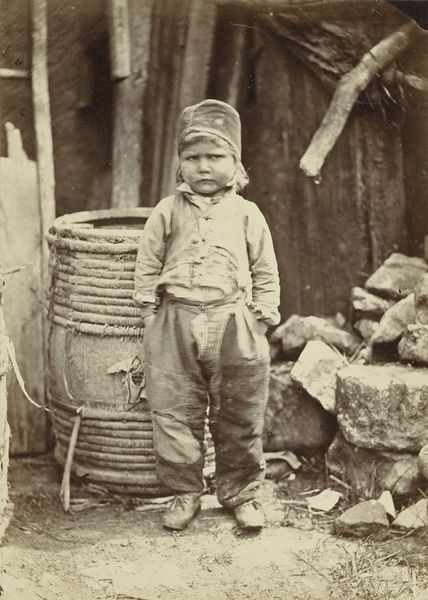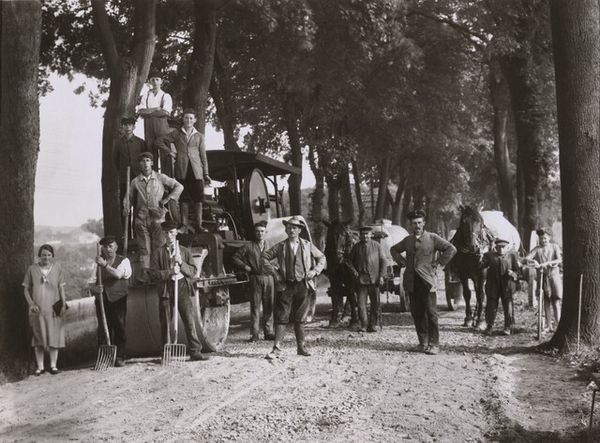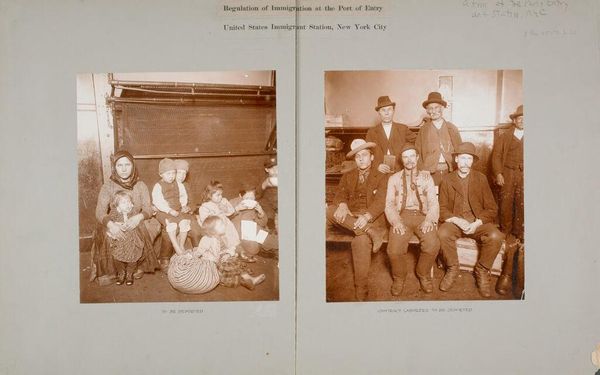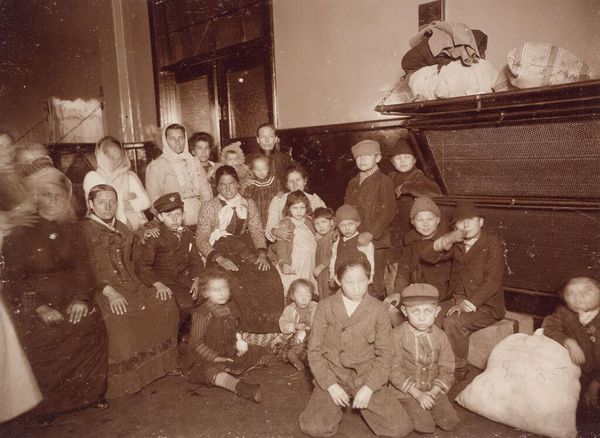
Copyright: National Gallery of Art: CC0 1.0
Curator: This gelatin silver print, entitled "Peru, page 8", was created by Robert Frank in 1948. Editor: My immediate reaction is a somber recognition of collective struggle. The uniformity of these children, lined up and bearing heavy burdens, speaks volumes about societal inequalities. Curator: Frank, though celebrated for his later work "The Americans", was already grappling with themes of social observation in this earlier piece. What stands out is the palpable weariness mirrored in their eyes, reflecting perhaps, not just physical burdens but systemic oppression. Editor: It’s striking how the image embodies both a social landscape and individual portraits. The background feels deliberately stark and impoverished, emphasizing the lack of opportunities for these children. What could they possibly carry in such rudimentary packs? Their young faces carry wisdom beyond their years. It forces us to consider intersectional vulnerability - childhood, poverty, and ethnic identity coalescing. Curator: We have to also remember the historical and political moment; Peru in 1948 wasn't the same place it is today, and access for outsiders with cameras was highly controlled. What Frank captures is this brief glimpse behind closed doors, making these subjects permanently visible on a global scale. How do you think it adds a narrative layer? Editor: Visibility isn't always virtuous; it can be exploitative. This piece challenges me, even now, to wrestle with the ethics inherent to representation. Whose voice is being centered? Do we truly hear the voices of these Peruvian children? Frank gives a glimpse, but lasting change mandates empowering communities, so we confront power imbalances and not merely depict them. Curator: True, that responsibility extends to how institutions present this work. For viewers, what does it mean to appreciate it now? Editor: It means moving beyond aesthetic consumption. Instead, to really reckon with its weight, to actively challenge the socio-political norms that still allow childhoods to be lost in labor, that’s the true call to action. It invites crucial questions regarding cultural appropriation and the power of images. Curator: It is powerful in many different ways, even many complicated ones.
Comments
No comments
Be the first to comment and join the conversation on the ultimate creative platform.
